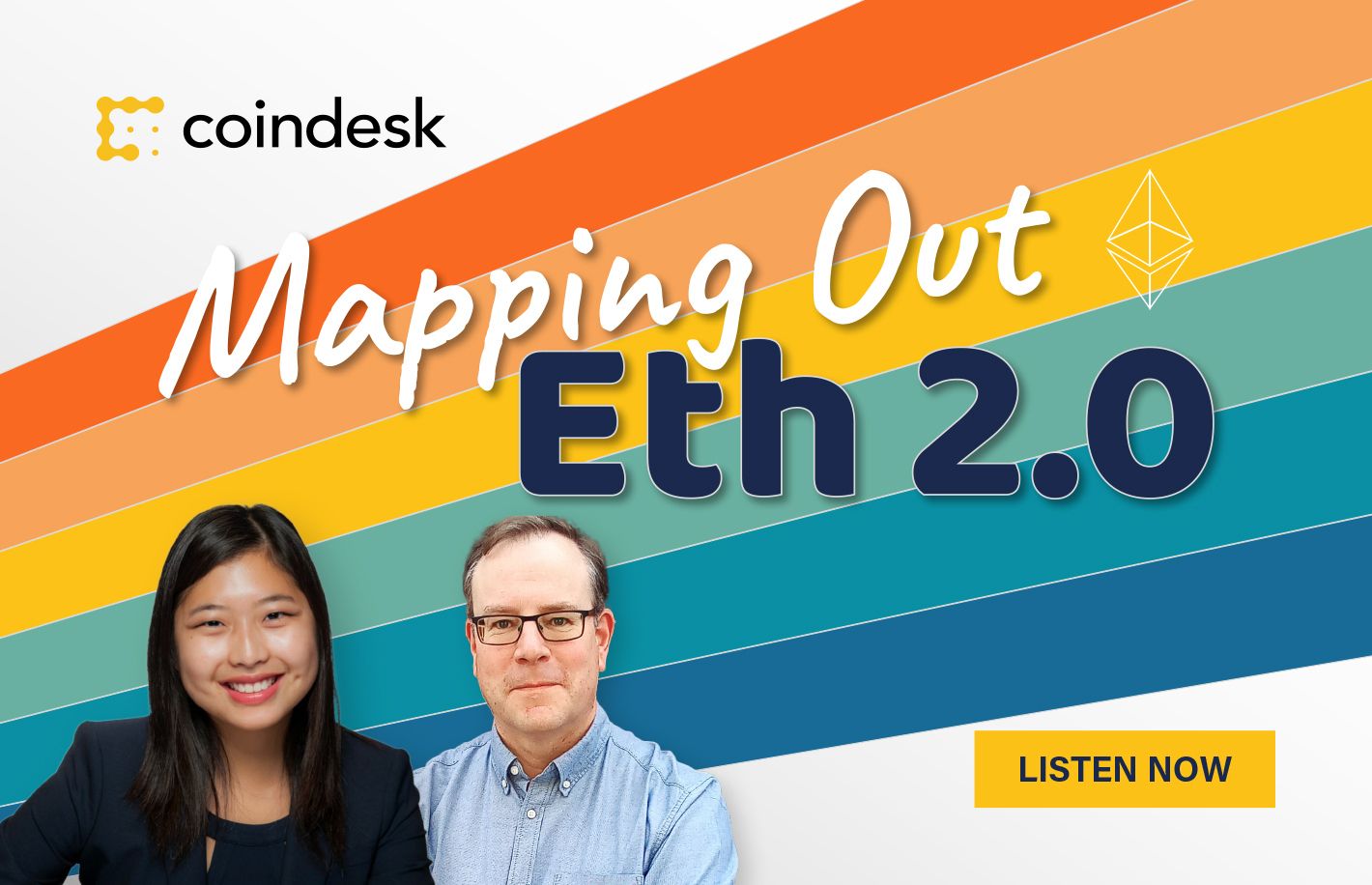In this week’s episode of “Mapping out Ethereum 2.0,” CoinDesk’s Christine Kim and Consensys’ Ben Edgington invite Alexander Blum, the managing director of digital asset investment fund, Two Prime, to discuss institutional interest in ether, regulatory trends in DeFi and key metrics to suggest ether is outperforming bitcoin.
This episode is sponsored by Unique One Network.
Two Prime is a fund that only invests in two crypto assets, bitcoin (BTC) and ether (ETH). The firm also trades BTC and ETH options to further amplify the returns of their underlying holdings. Near the beginning of the year the fund was equally exposed to both ether and bitcoin, but outperformance and rebalancing have now given the fund an allocation to ether of about 70%.
“I am not here ideologically. I am here trying to make money for people … and on both a fundamental and technical level, ETH looks more promising right now,” said Blum. “Ether is really open source. People are trying new stuff, they're experimenting, they're making mistakes, there are people who are excited about stuff. To me, bitcoin feels like a bunch of like monks protecting their holy sacred grail.”
On the decentralized finance (DeFi) side, Blum noted there’s high technical risk associated with these applications due to the composability and lack of segmentation in the DeFi market. Similar to the U.S. subprime mortgage crisis in 2007, the leveraged and layered nature of DeFi products means it could be easier for an error in one application to introduce cascading risk to other applications.
Kim and Edgington also discussed the first release of formal verification code specifications for the Ethereum 2.0 Beacon Chain. Formal verification goes beyond normal software testing and allows developers to see how their code could react to a variety of real world situations.
Edgington noted, “Ethereum bugs are particularly serious. I mean, they have devastating effects. If the protocol forks because clients disagree with each other about the state, then there's a huge amount of value at stake.”
Formal verification is the largest step forward in ensuring that serious bugs in Ethereum 2.0’s protocol layer code are caught before the merge to proof-of-stake. Kim saw taking these extra precautions as an important step to transitioning Eth 2.0 from an “experimental project” to a production-ready network.
To hear the full conversation featuring Blum, Kim and Edgington, check out this week’s episode of “Mapping Out Ethereum 2.0.”
Links:
A Derivatives Trader's Guide to Institutional Crypto and Defi, A Report by Two Prime - https://twoprime.io/a-derivatives-traders-guide-to-institutional-crypto-and-defi/
The Rise of Institutional Ethereum Investors, A Report by Two Prime - https://twoprime.io/the-rise-of-institutional-ethereum-investors/
Formally Verifying the Ethereum 2.0 Phase 0 Specifications, Blog Post by Consensys - https://consensys.net/blog/developers/formally-verifying-the-ethereum-2-0-phase-0-specifications/
Eth 2.0 Formal Verifications Specs - https://github.com/ConsenSys/eth2.0-dafny













